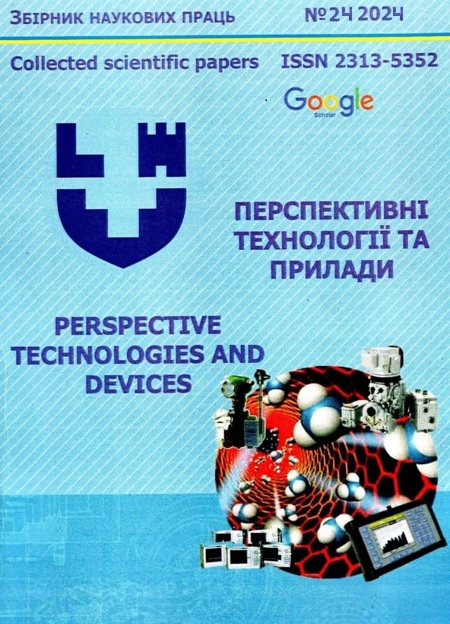ANALYSIS OF THE FORMATION OF THIN METAL FILMS ON THE SURFACE OF BIO-AND ARTIFICIAL POLYMERS FOR BENDING SENSORS
Abstract
The influence of different types of polymeric substrates - polyimide (PI), polyvinyl alcohol (PVA), nanocellulose (NC), nanocomposite (NC-PVA) - on the formation of Ni/Cr films and the electrical characteristics of bending sensors based on them for biomedical applications is analyzed. The scanning electron microscopy (SEM) method was used to evaluate the surface morphology of Ni/Cr films, and the energy dispersive X-ray analysis (EDX spectra) was used for their chemical analysis. The electrical resistance of Ni/Cr films in static conditions and the change in their resistance during the bending of the human thumb were measured. Obtained results indicate the influence of the type of substrate on the urface morphology of Ni/Cr films, as well as the electrical characteristics of bending sensors based on them. In particular, it is shown that, in terms of signal value and reversibility of bend sensors, the NC-PVA nanocomposite is a promising substrate material. Such devices are recommended to be used as disposable sensors for wearable biodegradable electronics.


 https://scholar.google.com.ua/citations?
https://scholar.google.com.ua/citations?

